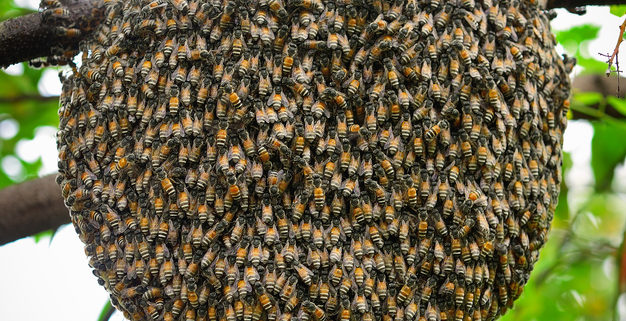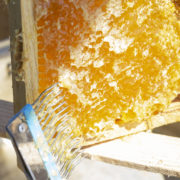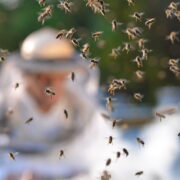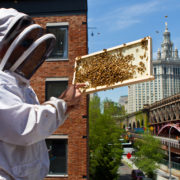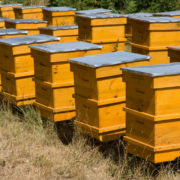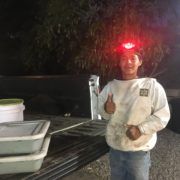Starting A Beehive Without Buying Bees
In a world where everything costs money, it is difficult to believe that one of the simplest ways that a beekeeper can start a new colony is completely free. During the swarming season, which takes place every spring, complete beehives literally fall out of the sky! Why not make them yours, and in the process start a new beehive without buying bees?
Catching a swarm is not as difficult as one would think. Beekeepers have been starting beehives in this manner as a time-honored tradition for centuries. Here at Wildflower Meadows, we catch our fair share of swarms and obtain new beehives for free too. (Of course, we lose a few swarms each year, but that is another story . . . )
To catch a swarm, a beekeeper needs to think like the swarm. A swarm of bees has one main objective, which is to find and settle into a desirable new home. When a swarm is on the loose it can be found in either of two states – settled (usually resting on a branch) and looking for a home, or flying (moving from one location to another) and looking for a home. Either type of swarm can be captured by an opportunistic beekeeper.
Settled swarms require the beekeeper to go out, suit up, and retrieve the bees from their resting area. The beekeeper usually shows up to the swarm site with a collection box or empty hive body. More often than not, it is not particularly difficult to shake or brush the bees into the collection box. If the swarm is clustered on a branch, oftentimes a beekeeper will simply cut the branch and remove both the bees and the branch at the same time. (Sometimes, however, the swarm is out of reach and cannot be safely be retrieved.) How can you as a beekeeper locate these types of swarms? The best way to find swarms is to get the word out that you are available to collect them. Some cities and counties maintain lists of beekeepers who are available to collect swarms. A beekeeper that is looking for swarms can also contact nearby apartment managers or housing complexes, many of which run into unwanted swarms of bees, especially during the spring.
Believe it or not, swarms that are flying can also be lured, but this requires a more passive approach. In this case, the goal is to attract a flying swarm to the beekeeper’s equipment by using chemical lures, which are designed to mimic the pheromone that honeybees produce when they are calling their fellow bees to a location. To catch flying swarms, a beekeeper uses either bait hives or swarm traps. Bait hives are standard empty beekeeping hive bodies that have been scented with swarm lures. Swarm traps are containers specifically designed to lure and catch flying swarms (both swarm lures and swarm traps are sold by beekeeping supply companies).
The good news about swarms is that they are easy to handle. As long as a swarm is not well established in its new location, it has no young brood or honey to defend, so the bees normally behave very gently. Even a swarm from an aggressive African honeybee colony will act gently after it has been separated from its main colony.
Once you have collected your swarm, it is critical that you soon replace the queen that came with the swarm. Why? Because, the queen that arrived with the swarm is of unknown origin. It could have poor genetics that could lead the colony to be undesirable in many ways, such as having a bad temperament or being prone to disease. The only thing you know about a swarm is that the genetic line is likely to swarm. After all, it already has! With a new queen, especially one from Wildflower Meadows, you will be obtaining quality, healthy, and known genetic stock that is well suited for your new colony.

